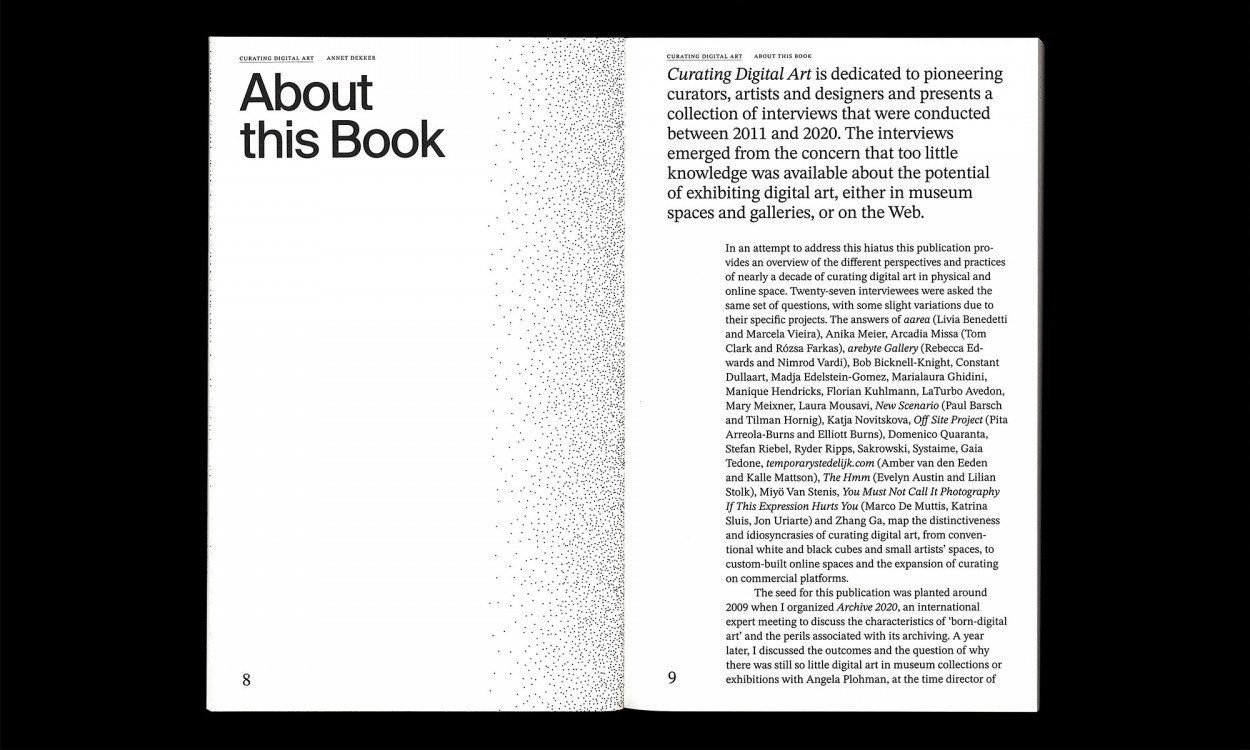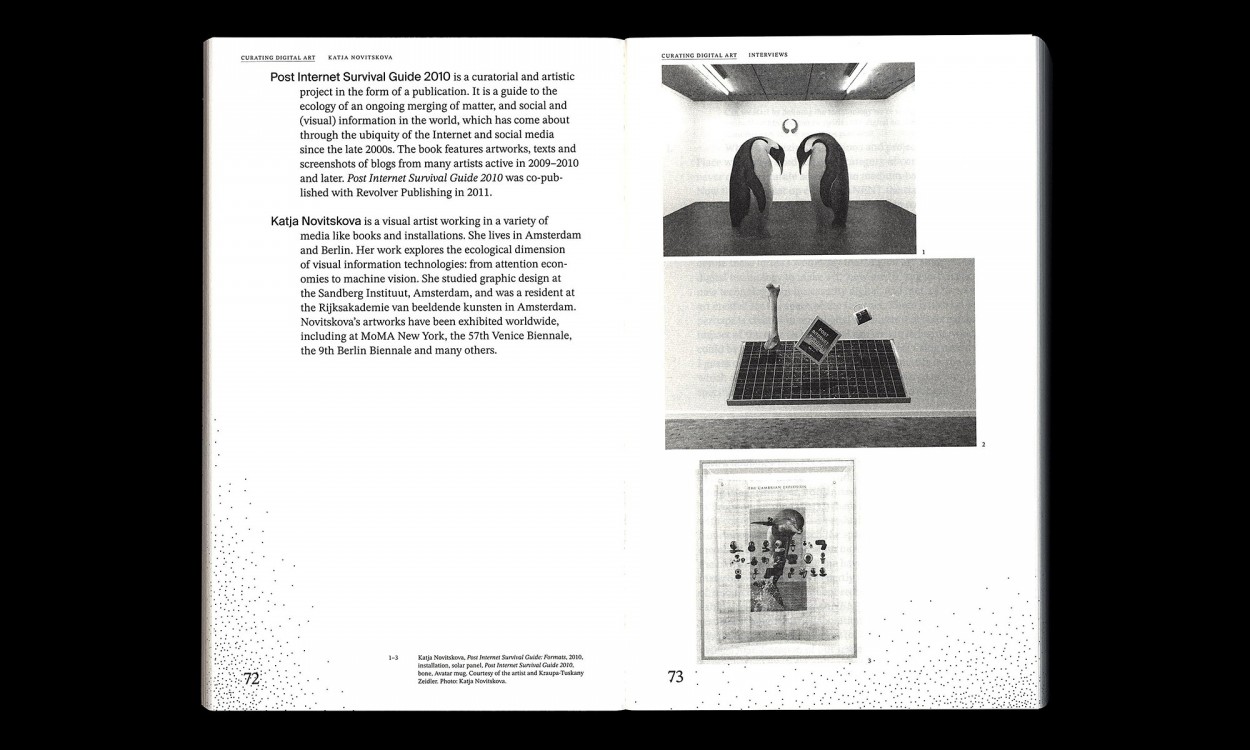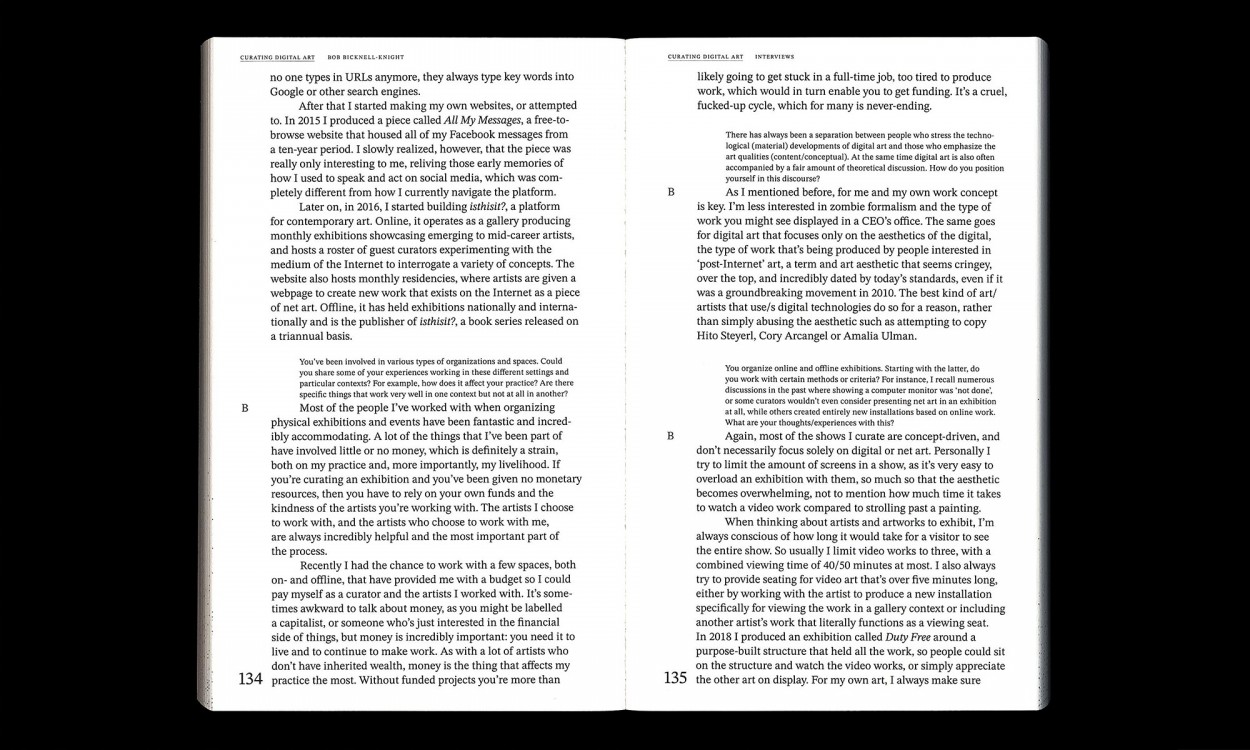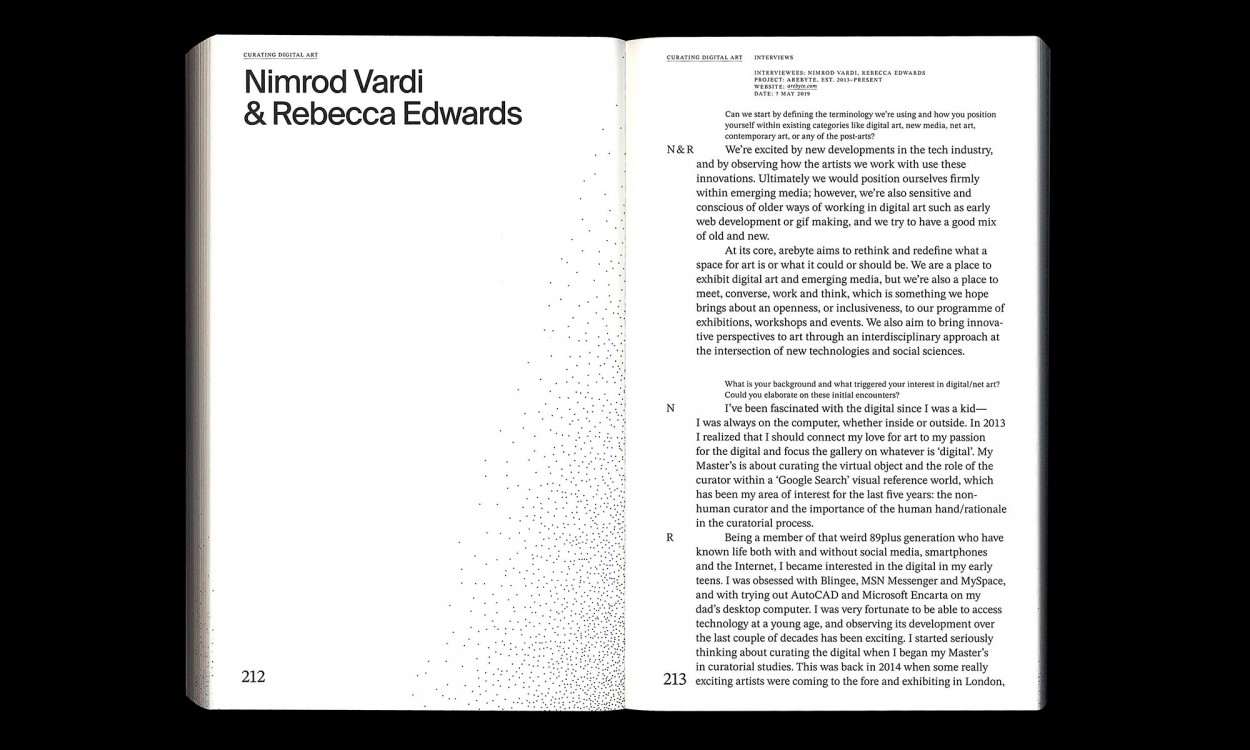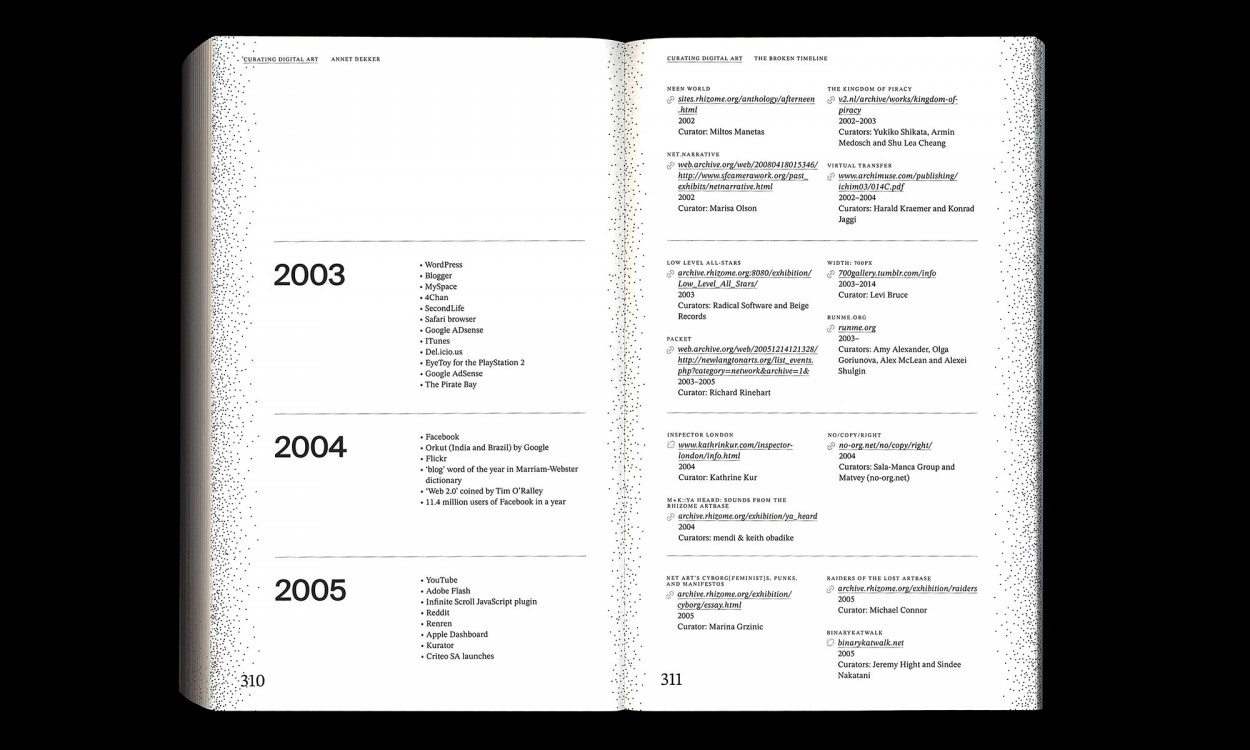Curating Digital Art
From Presenting and Collecting Digital Art to Networked Co-curation
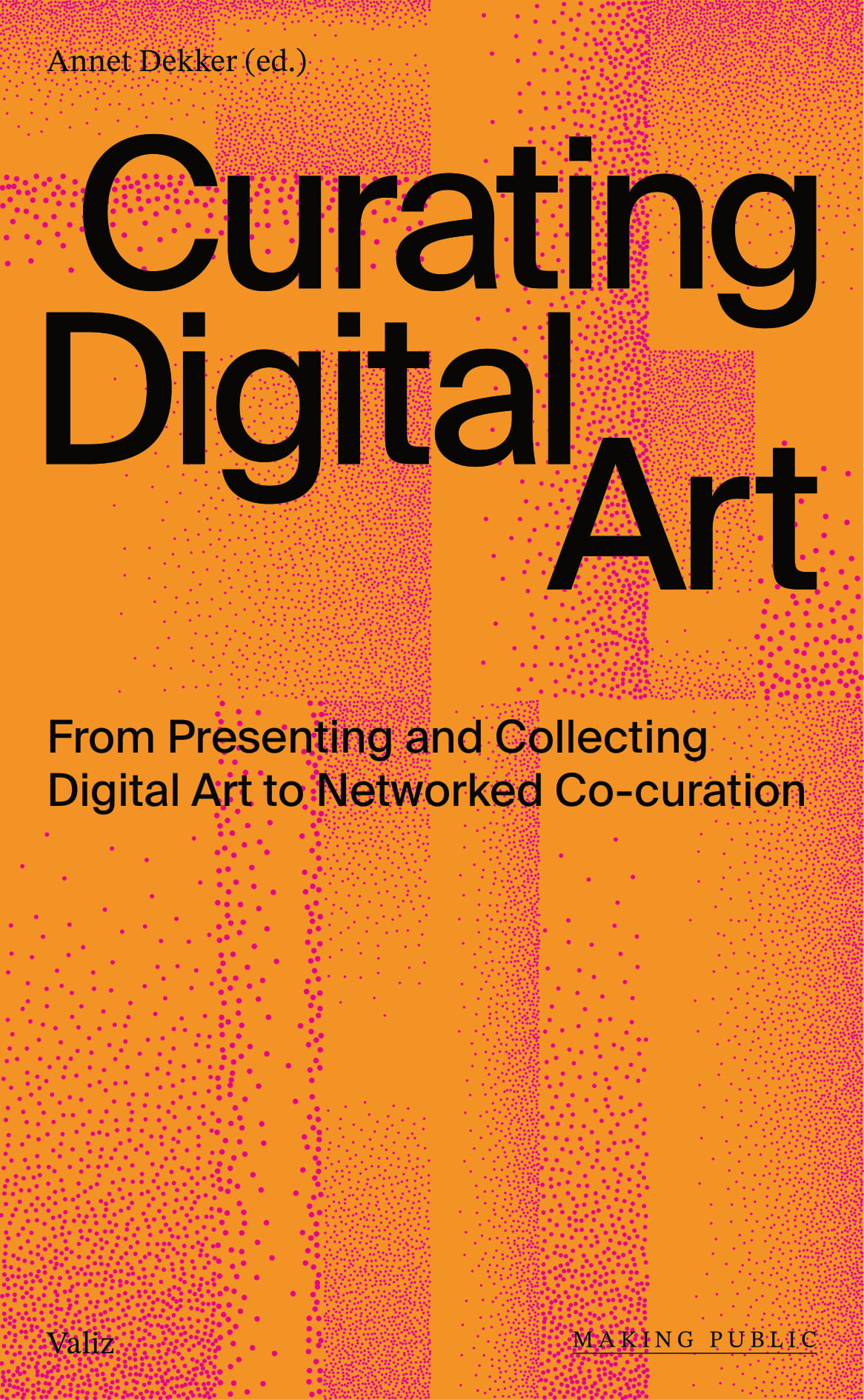
- Presenteert een verzameling van 27 interviews over de mogelijkheden van het tentoonstellen van digitale kunst, zowel offline als op het internet
- Reflectie op de lacunes tussen verschillende curatoriële discoursen
- Benadrukt hoe het web niet alleen een hulpmiddel of medium is, maar ook een sociaal-technische cultuur die kunst- en curatoriële praktijken heeft verrijkt en getransformeerd met nieuwe manieren van creëren en co-creëren
Auteur/Redactie: Annet Dekker
Bijdragen: Pita Arreola-Burns, Evelyn Austin, LaTurbo Avedon, Paul Barsch, Livia Benedetti, Bob Bicknell-Knight, Elliott Burns, Tom Clark, Marco De Mutiis, Constant Dullaart, Madja Edelstein-Gomez, Amber van den Eeden, Rebecca Edwards, Rózsa Farkas, Marialaura Ghidini, Manique Hendricks, Tilman Hornig, Florian Kuhlmann, Kalle Mattsson, Anika Meier, Marie Meixnerová, Laura Mousavi, Katja Novitskova, Domenico Quaranta, Stefan Riebel, Ryder Ripps, Sakrowski, Katrina Sluis, Lilian Stolk, Systaime a.k.a. Michaël Borras, Gaia Tedone, Jon Uriarte, Miyö Van Stenis, Nimrod Vardi, Marcela Vieira, ZHANG Ga
Ontwerp: Irene Stracuzzi
Serie: Making Public
2021, Valiz | ondersteund door Stimuleringsfonds Creatieve Industrie, Prins Bernhard Cultuurfonds NL | Pb | 352 blz. | 24 x 14,8 cm (h x b) | Engels | ISBN 978-94-93246-01-0 | € 26,50
Annet Dekker is a curator and researcher. She is Assistant Professor Media Studies: Archival and Information Studies at the University of Amsterdam and Visiting Professor and co-director of the Centre for the Study of the Networked Image at London South Bank University. She has previously been Researcher Digital Preservation at Tate, London, core tutor at Piet Zwart Institute, Rotterdam and Fellow at Het Nieuwe Instituut, Rotterdam. She has published in numerous collections and journals and is the editor of several volumes, including Lost and Living [in] Archives. Collectively Shaping New Memories (Valiz 2017)
In de media:
- Lees hier de boekbespreking van Curating Digital Art in Boekman (zomer 2022)
What is the role of the curator when organizing digital art exhibitions in offline and online spaces? Analyzing the influence and impact of curating digital art, the book focuses on how the experiments of curators, artists and designers opened the possibility to reconfigure traditional models and methods for presenting and accessing digital art. In the process, it addresses how web-based practices challenge certain established museological values and precipitate alternative ways of understanding art's stewardship, curatorial responsibility, public access and art history. Through more than twenty interviews with artists and curators in the course of the last ten years, and flanked by an extensive timeline, the reader of this publication is given an insight into the discourse on digital art and its curation today.

